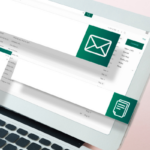
Mastering Email Marketing: 20 Proven Practices for Stellar Results
In the ever-evolving landscape of marketing channels, email marketing remains a stalwart method for generating leads and converting prospects. According to a HubSpot survey, a whopping 94% of marketers find email marketing effective in achieving their business goals. To ensure you’re maximizing the potential of your email marketing strategy, dive into these proven best practices.
Email Marketing Best Practices:
1. Don’t purchase contact lists.
Rely on earned, not bought, information for healthy open rates.
GDPR compliance necessitates consent from European recipients, typically lacking in purchased lists.
2. Avoid using ‘No-Reply’ in the sender’s email address.
CAN-SPAM guidelines discourage the use of “no reply” to maintain recipient rights.
Personalize sender names to boost engagement and comply with regulations.
3. Stick to fewer than three typefaces.
Simplify your message with no more than two fonts for enhanced readability.
Opt for web-safe fonts in the 10-12 point range for consistent legibility.
4. Optimize the email’s preview text.
Craft a custom preheader that entices recipients, supplementing the subject line.
Avoid default messages that may decrease open rates.
5. Include an email signature.
Enhance brand visibility with a signature, fostering a personal touch.
Leverage the opportunity for a call-to-action, directing recipients to your website or social media.
6. Clean your mailing list regularly.
Maintain a high-quality mailing list by removing inactive subscribers.
Implement workflows to gradually shift subscribers based on engagement levels.
7. Keep the main message and call-to-action above the fold.
Prioritize important content at the top for increased visibility.
Recognize the limited attention span of recipients, aiming for a swift impact.
8. Personalize the email greeting.
Utilize personalization tokens for customized greetings based on recipient names.
Capture attention with a human touch, enhancing the likelihood of engagement.
9. Keep your email around 500 to 650 pixels wide.
Optimize email templates for mobile responsiveness, ensuring a positive user experience.
Consider user habits, as nearly 30% of marketers emphasize mobile optimization.
10. A/B your subject lines and calls to action.
Employ A/B testing to refine subject lines and calls to action.
Continuously improve content based on recipient responses.
11. Include your logo.
– Enhance email engagement and brand recall by incorporating your logo.
– Leverage logos for increased consumer confidence and open rates.
12. Name the offer in your subject line.
– Increase open rates with subject lines featuring incentives or promotions.
– Balance promotional emails with a focus on customer loyalty and industry insights.
13. Allow recipients to subscribe to your newsletter.
– Facilitate sharing by including a “Subscribe” option in forwarded emails.
– Ensure this addition aligns with your primary campaign goals.
14. Write compelling (but concise) subject lines.
– Craft subject lines with 30-50 characters for optimal visibility.
– Create urgency while providing a glimpse of the email’s content.
15. Create automated emails for opt-ins.
– Set up automated reminders for subscribers who may forget their opt-ins.
– Provide additional content or rewards to incentivize continued engagement.
16. Closely tie emails to landing pages.
– Maintain consistency between email content and landing page design.
– Utilize tracking tools to assess the performance of emails and landing pages.
17. Conduct a five-second test.
– Ensure clarity and a compelling call-to-action within the first five seconds.
– Seek feedback from colleagues to refine subject lines or landing page links.
Outbound Email Best Practices:
1. Make it personal.
Tailor outbound emails based on existing connections or cold outreach.
Personalize greetings to establish a human touch.
2. Include a clear CTA.
Clearly articulate the desired action in your outbound emails.
Avoid vague or open-ended closings to enhance clarity.
3. Follow up.
Strategically follow up based on industry response times.
Maintain a balance to avoid overwhelming recipients with excessive follow-up emails.
Incorporate these best practices into your email marketing strategy to harness the enduring power of this reliable and effective tool.




